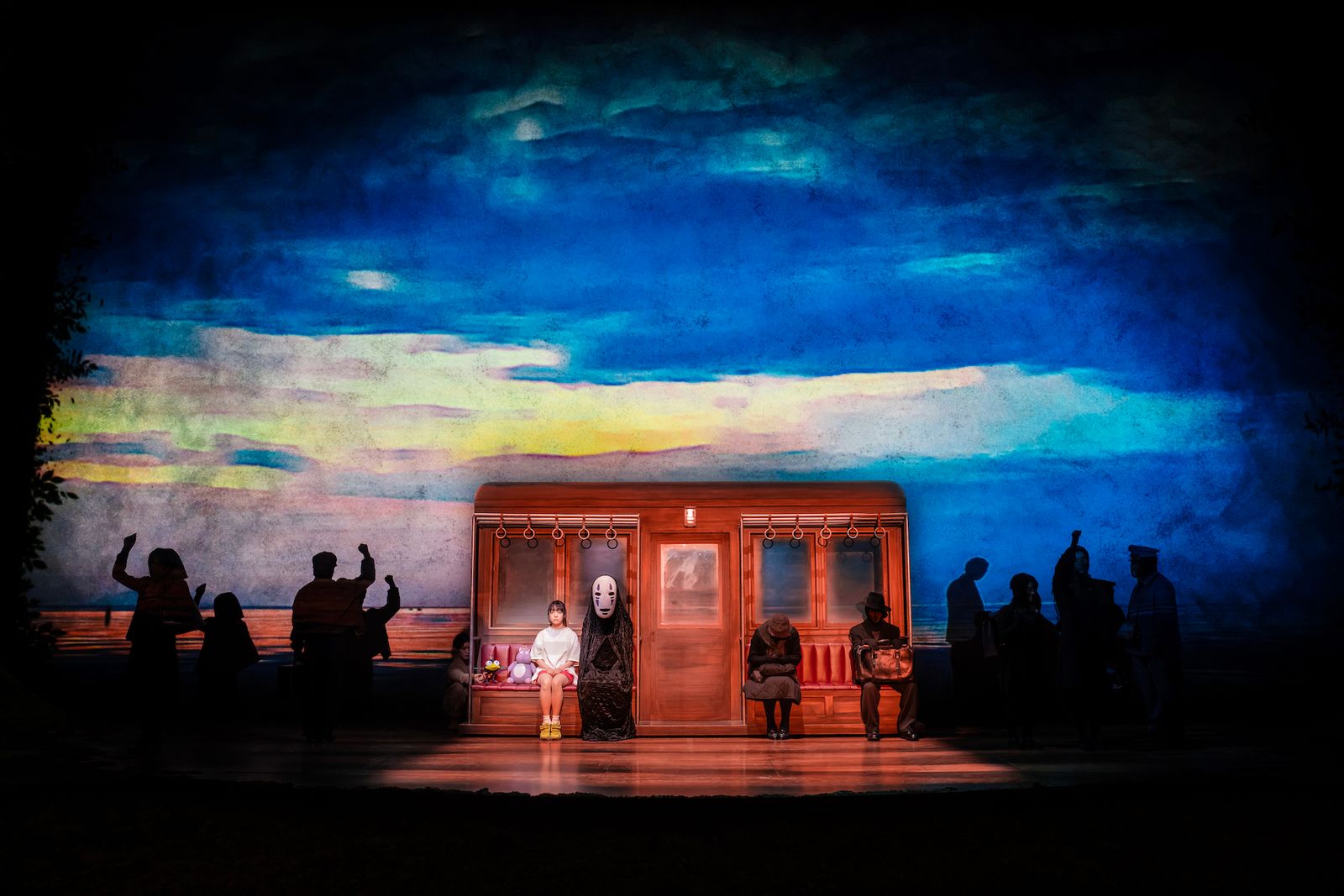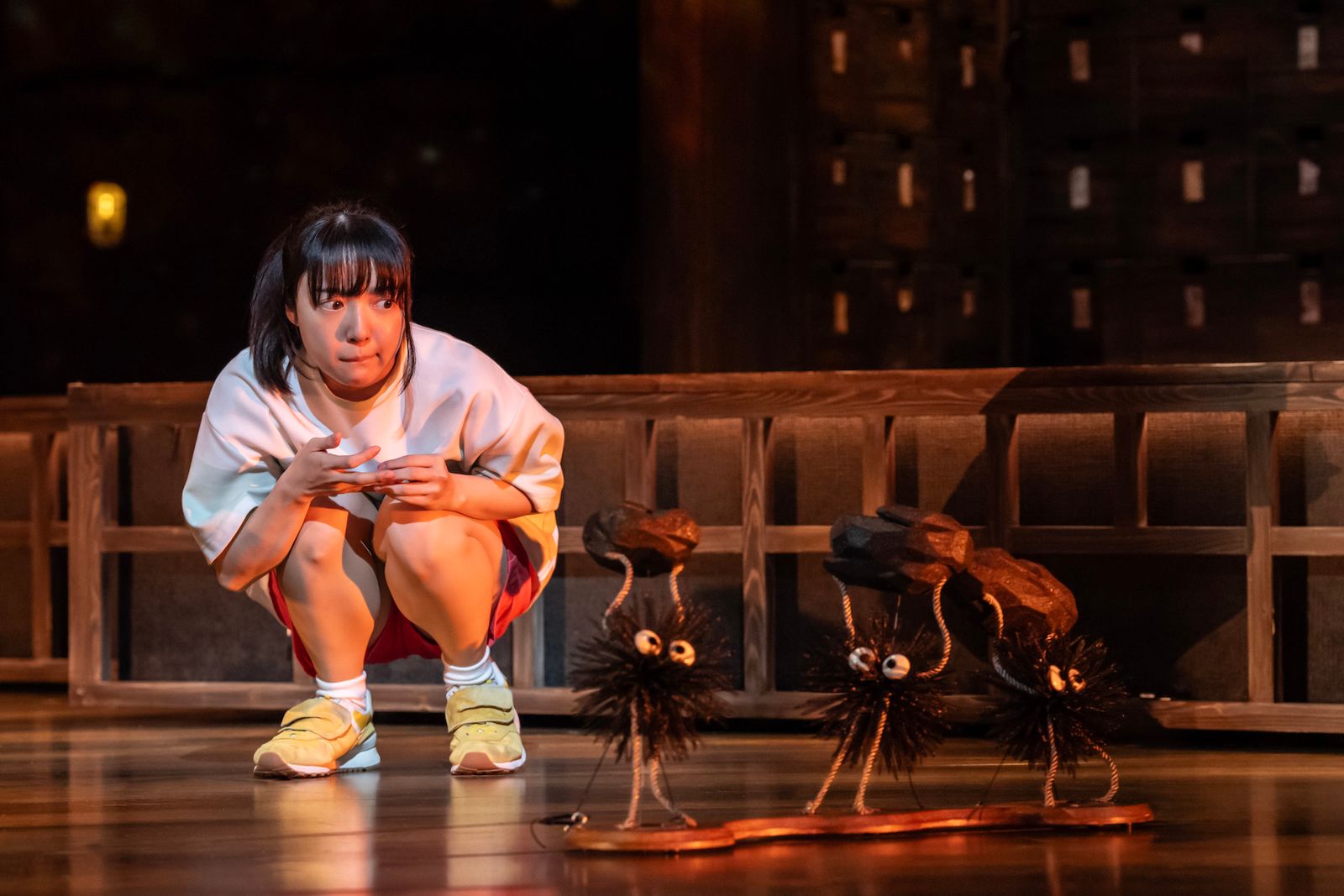Spirited Away (Play)

Adapted by John Caird
Co-adapted by Maoko Imai
Original score by Joe Hisaishi
London Coliseum (17 July - 24 August 2024)
Official Website UK
Review by Michael Tsang
The theatre adaptation of Studio Ghibli’s film Spirited Away (directed by Miyazaki Hayao in 2001) has certainly made a mark on London’s theatre scene this summer, with its exceptionally long run of several months in a central London venue and its premiere attracting many celebrities such as Graham Norton to attend. Beyond the media hype, this is a relatively safe production, and should be considered a “fan service” to Ghibli fans with a sensual extravaganza. (In Japan, the phrase “fan service”—which has now entered mainstream English usage—means pleasing fans with treats, usually by giving them what they want.)
The immersive theatre experience starts from the theatre lobby which is decorated in stereotypical sakura blossoms and other nature-themed motifs. Inside the theatre, the decoration continues to engage the audience into the idea of a Japanese journey, with ornamental oriental lanterns and mystic-sounding music foreshadowing the sense of adventure that ensues. Even the “no mobile phone” announcement is in Japanese. As expected, a sizeable portion of the audience are Asian.
The production is meticulously executed, and very faithful, even down to the Japanese dialogue. Fans of the anime may be relieved to know that every detail and every character from the film is retained and reproduced. Notably, this involves creative usage of theatre technologies including a revolving, turntable stage and very interesting adaptation of the rim of that turntable as a rail track for model trains. The use of model trains creates effective contrasts in scale as, near the end of the story, Chihiro then takes that train to see Zeniba—here, a canvas drop and the entire apron area form the interior of the train. Other innovations include using puppets operated by an expert stunt crew to reproduce all the characters—indeed it must have been a challenge as there are so many non-human beings in the story.

In Japan, the production has debuted a second-generation cast already, but the London run begins with the first-generation 2022 cast before switching to the newer actors from July. This review is based on the first-generation cast, who all pull off a brilliant performance. Hashimoto Kana plays Sen/Chihiro by the book, capturing the girl’s remarkable growth on point. Viewers of the film version may be pleasantly surprised to recognise Natsuki Mari as lending the voice to the iconic antagonist Yubaba, but here she wows not only with her voice but with her acting as well, especially through playing the dual role of twin sisters Yubaba and Zeniba convincingly. Last but not least, Yamano Hikaru as Kaonashi (No-Face) is particularly stunning for his portrayal of the creepy character with his flexible contortion of body movement and excellent manipulation of a black cloak.
Some may find the production “too busy”. Since there are so many characters and the production makes it a point to represent all of them, the main cast plus the stunt crew on stage may sometimes make an overwhelming spectacle. Changes to characters and plot are often a natural and necessary result in adaptations, and there is certainly scope to simplify some of the scene sequences: in the train ride to Zeniba’s place mentioned earlier, there really is no need to break the scene by shifting back to the bathhouse and to the train again; showing one uninterrupted train ride would have been a smooth transition. The degree of faithfulness is perhaps a unique challenge when adapting Japanese popular culture texts into a more traditional genre such as theatre, especially for the works of Studio Ghibli with a large fanbase around the world. Indeed, given that this is a Japanese production, the crew may have had Studio Ghibli’s reputation to defend, and any deviation from the story could upset fans. (RSC’s adaptation of Totoro took comparatively more liberties.)
But for the possible rigidity to characters and plot, the production wins with attention to detail and an extravagant stimulation of the senses, and many viewers may be gladly taken down memory lane.


